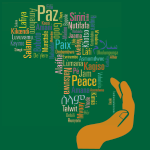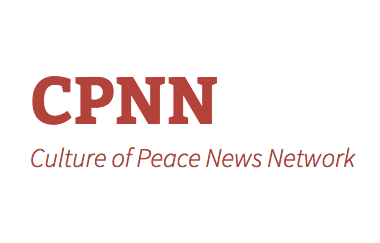MASS MEDIA FOR CULTURE OF PEACE
It has been the dream at CPNN from the beginning that our website and others like us would be able to attract so much readership that the mass media would need to take up the theme of the culture of peace in order compete with us.
I don’t know if we have played a role in this, but indeed we see increasingly, at least in Latin America and Africa, that commercial media are taking up the theme of the culture of peace.
The latest example comes from Mexico as described in the CPNN article, “Zacatecan Radio and Television System to introduce ‘the culture of peace’ as a transversal theme.“
The many decisions taken in their manifesto “Public radio as a force for peace in Mexico” include:
- Every news program should start and end with positive news and should include at least one story related to “peace initiatives”
- Each radio station should hold a marathon at least every quarter with readings, verses, songs and poems for peace and profiles of people who have contributed to peace
- A 30-episode radio program. 15 minutes of duration will be broadcast by all public broadcasters in Mexico with content derived from the manifesto
The manifesto was developed with input from journalists in Colombia who explained how the media are playing a positive role in the transition to peace that their country.
In Colombia, for example, the initiative “Community Radios for Peace and Coexistence“, launched in mid-2016 with support from the European Unon, supports 400 of the 627 community radio stations in the country to generate a culture of peace in the most remote rural areas, those most affected by the armed conflict. The initiative not only opens microphones to the people, but also includes workshops in which 200 community radio journalists have been trained in the elaboration of educational content on peacebuilding,
Last year in Colombia, the Office of the High Commissioner for Peace began training journalists and announcers working at hundreds of small community radio stations across the country including many remote regions where radio is the only medium to which people have access.
In Africa, there are now so many media initiatives for a culture of peace that we have started an entire section of CPNN dedicated to the question “African journalism and the culture of peace, A model for the rest of the world ?” Links are provided to CPNN articles from Uganda, Tanzania, Senegal, Democratic Republic of Congo, Mali and Somalia.
In Uganda, since the end of the civil war with the LRA, local community radio stations have been reaching out to the public through peace reporting with a focus on development. International agencies have trained hundreds of local journalists in peace reporting. A number of community radios were set up with a commitment to peace journalism and are still active today.
UNESCO’s project “Empowering Local Radio with ICTs” is helping radio stations to inspire intolerance for gender-based violence and hold perpetrators and duty-bearers responsible in Tanzania, Democratic Republic of Congo, Uganda and Burundi.
In Senegal last year, journalists and experts from the countries of West Africa and the Sahel met together in a seminar on “The role of journalists and the media in preventing violence and violent extremism.”
“It is the responsibility of each person to spread positive content and useful experiences that participate in the construction of the world, and thus in a culture of peace. It is therefore up to us to make the media a positive tool for the construction of society,”
according to Patrick Busquet, the head of the Hirondelle Foundation (Democratic Republic of Congo). It is in pursuit of this ideal that as of 2014 the Hirondelle Foundation had installed several media in Africa: Radio Okapi in Kinshasa, Radio Ndeke Luka in Bangui, the Tamani studios in Mali, Mozaïk in Ivory Coast, and Hirondelle in Guinea.
Back in 2011, The Journalists’ Network for Peace and Security (NetPeace) was officially launched at the AU headquarters of the African Union under the theme “Promoting a Culture of Peace through the Media”. Regional coordinators were established in Mauritania, Mali, Liberia, Djibouti, Kenya, Burundi, Equatorial Guinea, Zimbabwe and South Africa.
In the United States last year CPNN took part in a panel at Southern Oregon University called “Cultivating a Culture of Peace in an Era of Trump: What’s the Media’s Role ?” Among the panelists were Jeff Golden from Southern Oregon Public TV and Bert Etling, a member of the Ashland Culture of Peace Commission and editor of the newspaper Ashland Daily Tidings. Articles on the culture of peace from the Daily Tidings are frequently reprinted by CPNN.
Hopefully, we will see further development of media for a culture of peace in the North, but for the time being, it is Africa and Latin America in the lead.

